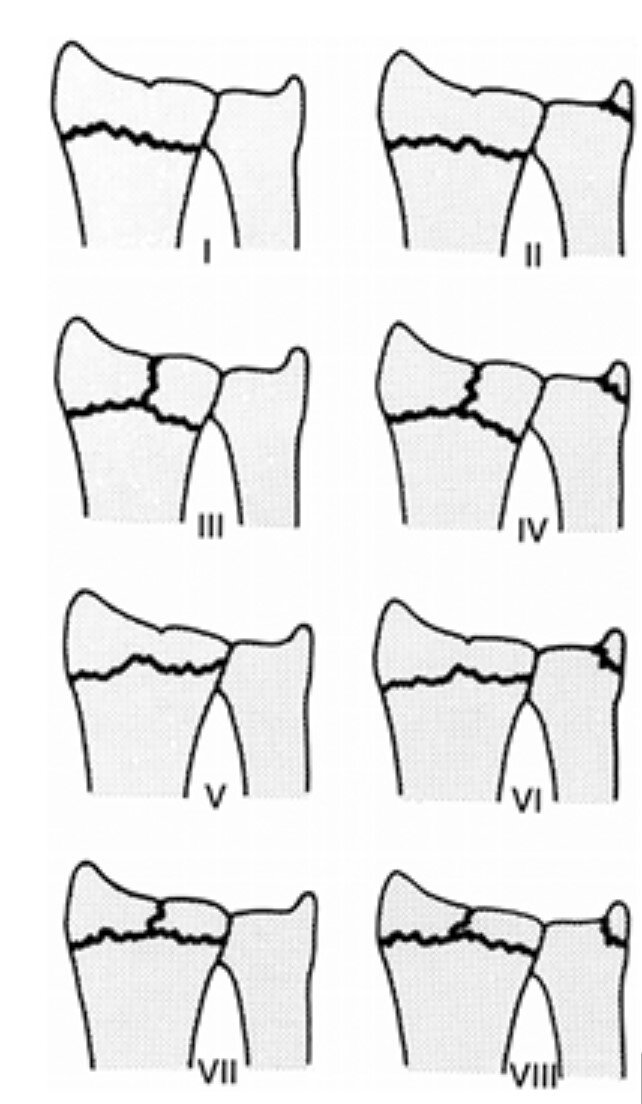What is it? It’s a deep laceration that extends into the normally sterile intra-articular joint space and places the joint at risk of septic arthritis. The knee is the most commonly involved joint. Young adult males most at risk for traumatic arthrotomies. Think about high energy injuries like MVAs and falls from a significant height, and penetrating trauma (GSW, knives, sharp metal).
Why does it matter? Risk of significant functional impairment. Primary wound closure vs. operating room for emergent washout.
Usually local wound exploration is sufficient for diagnosing it or if it’s just obvious like in the picture above with the bone and/or tendon sticking out. Other times, you might look for air bubbles or extravasation of joint fluid which is apparently straw colored.
Where it gets interesting is if you are clinically unsure if the laceration violates the joint space. There’s been some limited data on x-rays and CT looking for intra-articular air as a sign of joint violation but the studies are small and it’s not the gold standard.
The standard tool for assessing traumatic arthrotomies, and what we do here, is the saline or methylene blue load test. These are the steps:
- Arthrocentesis of the joint
- Inject sterile saline or methylene blue while passive movement is applied to the joint
- Observe the laceration site for extravasation
- Sensitivity increases with more volume injected but so does the pain
Arthrocentesis of knee: You can enter from almost any direction, with the medial/lateral approach being the most common while the knee is fully extended.
Start at about the 1:58 mark https://www.youtube.com/watch?v=V8idT6fwU0Q&feature=emb_title
Remember, give antibiotics early, update tetanus, get orthopedics consult early on especially if there is uncertainty.
Sources






